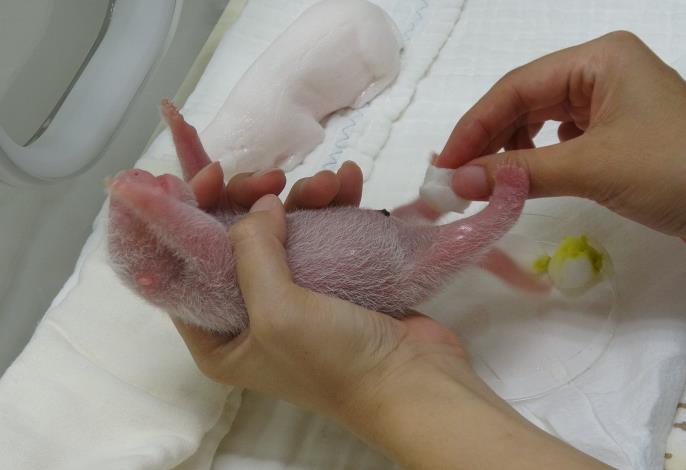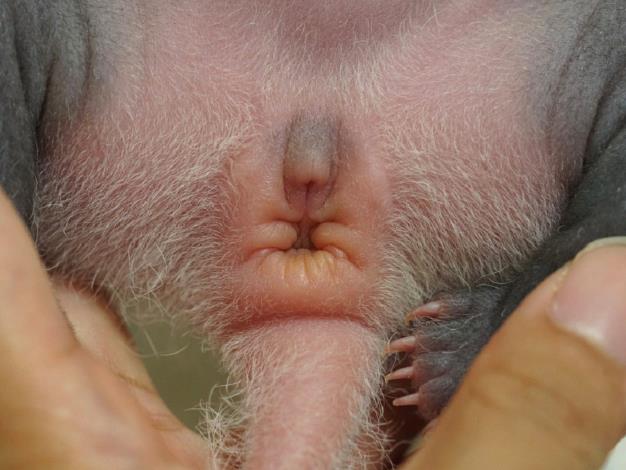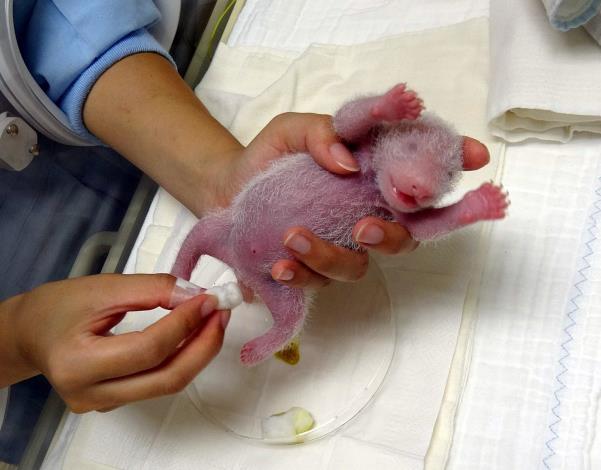Is the sex of Giant Panda cubs hard to tell? Identifying the gender is a real eyesight test!
The gender characteristics of giant pandas are not obvious at birth.
Gender can be determined through the external shape of genitals and their distance from the anus, a task that requires some effort; the distance for male giant pandas is twice that of females.
This method, however, is relative and can easily lead to confusion. The shape of the genitalia is therefore the best guide.
Although herbivorous mammals like the African wild ass and giraffe have easily distinguishable genitalia at birth, the difficulty of determinig gender is quite common in the animal kingdom. Like the giant panda, the gender of newborn meerkats in the Children Zoo can only be determined using the distance between the genitals and anus as a guide.
The gender of the black-and-white ruffed lemur in the Desert Animal Area is hard to determine, even as adults. Females naturally have a "pseudo-penis" in their lower abdomen; the presence of testicles upon sexual maturity is the only way to differentiate.
Female giant panda cubs genital shape resembles an inverted V ("ʌ").
In males there is a small, protruding bump that ultimately develops into a penis. Once male giant pandas are about 20 days old, it is possible to feel the testicles as small lumps in the pelvic region. The testes only descend into the scrotum at two to three years of age.
When "Tuan Tuan" first joined Taipei Zoo, the keepers observed that only one testicle had descended. The other testicle finally descended into the scrotum after careful massaging and nursing by the keepers.





![Taiwan.gov.tw [ open a new window]](/images/egov.png)
